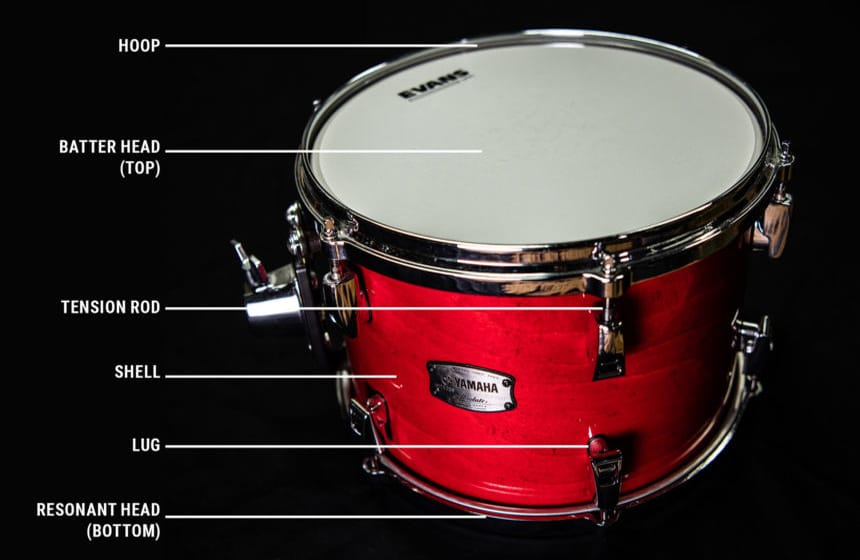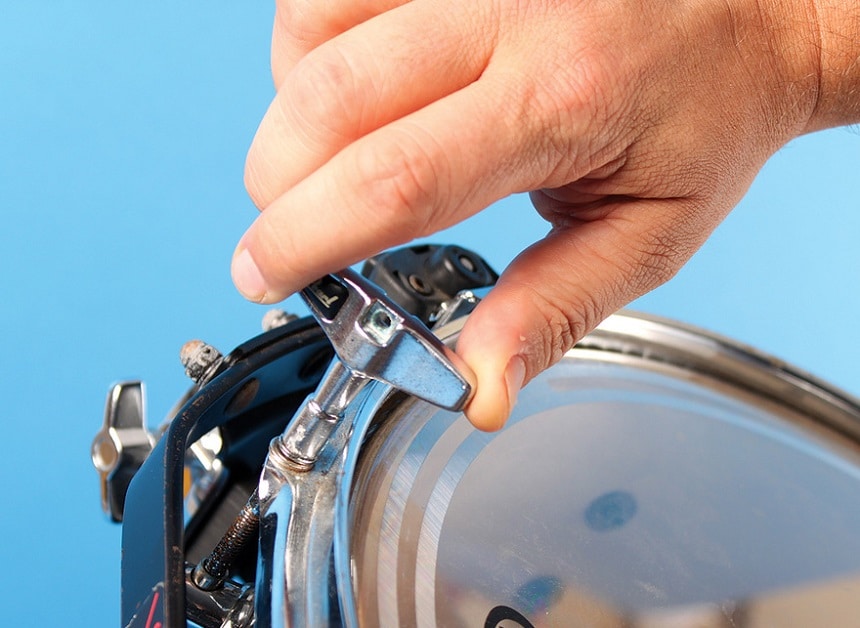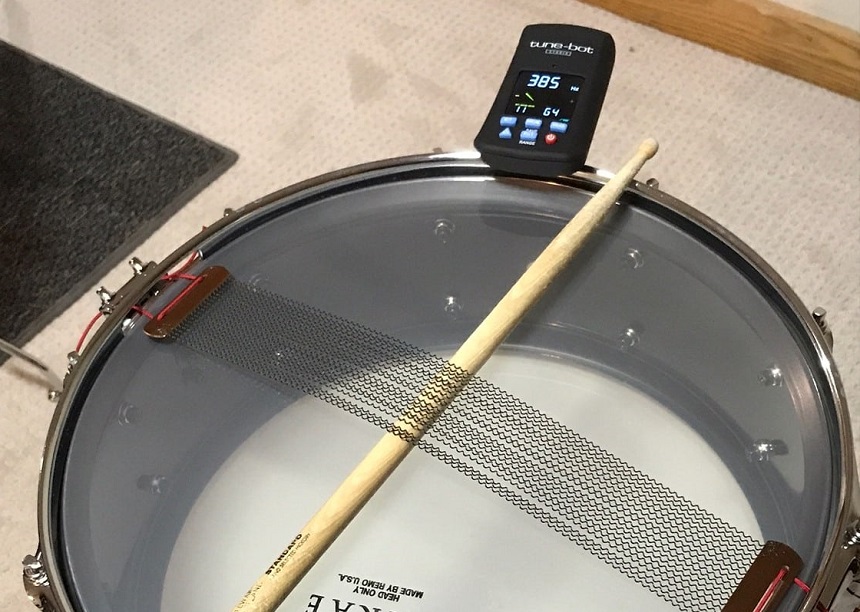Whichever instrument you choose to learn and play, you will have to consider tuning. If you want to know how to tune a snare drum, you might be surprised to learn that there isn’t necessarily a “right” or “wrong” and there are a number of ways to tune. When you are looking to tune a piano or a guitar, there are certain conventions you need to stick to, but tuning a snare drum is more about crafting a tone that you like. If you want to know how to tune a snare drum for rock music, it might be different in comparison to other genres and styles of music.
For example, you might want to tune a snare drum to have a real high-end crack and sizzle to it, to cut through a mix perfectly and sound good when partnered with guitars and other instruments. Other styles of music might actually benefit from different types of tunings, you may want something lower with a more boomy sound.
There are a few scenarios in which you need to tune your drums. If you’ve replaced the drum heads, you’ll need to tune. If the sound has become uneven, and you get a different sound from different parts of the snare drum, you’ll need a tune, and if it starts to sound wet and uneven you should also tune it. On top of this, you might just want to tune up to get a different tone.

The snare drum has two different drum heads. Bottom and top heads. Knowing how to tune a snare drum perfectly means that you need to be able to tune both.
The bottom head tends to have more of an impact on the decay of the sound, meaning how long it rings out for after you hit the drum head. If you want to change this, the bottom head is where you should start.
Tuning means tightening or loosening the lugs that surround the drum using a drum key. Before you start, you should unlock the snare wire. The wire is what gives the snare sound its rattle, without it, you will hear more of a deep ring to the sound.
You want the bottom head to be tight, but to have a bit of give. A couple of mm worth of give is ideal, so you should feel the head with your thumbs and check that it has this movement or flexibility.
When you tighten the bolts, make sure that you do this 180 degrees at a time. Even this may be too tight, so you may want to move it back 90 degrees if it has become too tight. Once you tune one lug, it is about getting all the rest to the same level of tightness. Tune in pairs across the snare drum, so if you tighten one up, you should tighten the lug opposite it next.
When you’ve reached the desired tightness, you can lock the snare wire back in place.

The top head is more about the crack of the sound and the attack. Before you start a full tune, you need to loosen all of the rods on the top head almost totally. This means you can loosen the rods so that you don’t feel any tension on the head but the drum rods are attached.
If you’re attaching a new skin, you should give it a little bit of a press to allow it to loosen up. If you’ve only just got used to setting up your drum set then you probably won’t be confident enough changing skins yet.
Next, start to tighten the rods to the desired tuning, but make sure you are doing so with opposing pairs to keep the tension even throughout.
As you tighten (remember to go 180 degrees at a time maximum) then you can check the sound continuously. You need to check by using your drumstick about one inch away from the lugs, as this will give you a good indication of the sound you are going to generate.
Percussion can be tuned to a pitch. To make it easier, you can tune to somewhere between a G and a B flat for an ideal sound.
You can tell if a snare needs tuning as it will end up with a horrible tone with a ring to it (not in a good way). However, when tuning it, what sounds good is quite subjective. Tighter tuning gives a snappy sound whereas a looser tuning can give you a resonant boom. The sound of your whole drum set should be considered.
There are some very simple tips that can help you to get the most out of tuning a snare drum, and create the best sound. As we’ve already said, it’s largely subjective, but there are still techniques you can use that will probably give you the best results.
Most people tune the top head lower. Use around a third as a starting point, and you can then try to notice the little differences in pitch and how this thickens out the sound. This is something that your ears will get better at over time, but eventually you will understand all the subtleties. You can mute one head and hit another if you need to hear them individually for tuning purposes.
Another big part of finding the right sound is ensuring you get the right drum heads. A lot of people disregard this and just buy any old heads, but actually, it is vital that you don’t do this. You can find that the nuance within the feel and sound of a different set of heads gives you that little variation in tone you’re looking for.

It’s worth spending some time exploring how to tune a snare drum with Tune Bot. The Tune Bot device has revolutionized how a lot of people tune their snares and the rest of their drums, as well as impacting their techniques. You can tune a lot more quickly if you have this extra frame of reference, and the Tune Bot also comes with some excellent inbuilt tones and features to give you a better tuning experience overall.
Tune Bots are the sort of thing that drummers have needed for decades. As well as measuring the frequency and notes of the drum, they help you to filter overtones and to fine tune.
The tuning process is very similar to those we’ve listed above, with one extra step; setting up your Tune Bot. This little device has lots of presets and allows you to choose some settings famous drummers have used for their snares to replicate a specific sound you might be looking for.
Firstly, you need to clip the Tune Bot to your drum hoop and ensure the mic sits over the head. You can then turn it on.
Next, hit the middle of the drum. Right in the center of the head will measure the pitch. The drum naturally needs to be suspended on a stand so that it doesn’t get dampened by anything else.
After measuring the fundamental, check that the reading is higher near the lugs. Hit closer to each lug and if it is a lower sound you can tighten to give the result you want. The pitch should be between 30% and 100% higher.
Just like the other techniques, you can then even up the sound around each of the lugs, providing an even tone for the whole of the snare drum and building up to the tone you want.
Tune Bot has some different devices. The Studio Tuner gives you more advanced control over sound and harmonics, perfect if you have plenty of time to tune up. The Gig Tuner, on the other hand, is ideal for touring musicians and allows you to tune no matter where you are, even with a bit of background noise. It’s perfect for roadies and touring musicians.
You don’t have to use Tune Bot, of course, and there are plenty of methods of tuning drums. A lot of people do it totally by ear and choose not to use any gadgets or devices. However, it is incredibly helpful to have something that can guide you, and even presets that other drummers utilize. It lets you save your own settings, and the fantastic guides and tutorials available on the brand’s website help you to get the most out of the tuner.
Whether you decide to buy a specific tuner or you just want to approach it by tuning by ear, that’s totally fine. The key aspects of knowing how to tune a snare drum are adjusting with the drum keys and ensuring that the tension is correct and consistent. This is something where there is no specific “right” or “wrong” so it won’t be a case of a tuner on your phone giving you an alert when you hit the right pitch. Instead, you’ll probably take a bit of time working out the exact sound you love, and even considering how it sounds with the rest of your bandmates.